Askania 10x60 Kinotheodolit-FernrohrDie Firma Askania (Werke AG), ehemals Bambergwerke, in Berlin produzierte verschiedene Mess- und optische Geräte für die Astronomie, Marine, Heer und Luftwaffe sowie Filmindustrie. Der Askania-Mitarbeiter und Geschäftsführer M. Roux entwickelte einen Kinetheodoliten, der per Kamera Flugbahnen aufzeichen und ausmessen konnte. Zu einem solchen Gerät gehörten jeweils an beiden Seiten ein solches 10x60 Fernrohr mit 90° Einblick zum Anvisieren und Verfolgen des Flugobjekts. Es sind Modelle mit verscheidneen Lackierungen - ocker oder grau - bekannt. Neben dem 10x60 gab es auch noch andere Baumodelle von Askania (kürzere 8x40/8x40, größere 12x60, 20x80). |
Askania 10x60 Cinetheodolite TelescopeThe Askania (Werke AG) company, former "Bambergwerke" in Berlin made different measuriong and optical instruments fpr astronomical, naval, artilelry and airforce use as well as for the movie industriy. The Askania worker and later chairman M. Roux developped cinetheodolites, which can track and capture flight paths with a camera. The 10x60 monocular with a 90° angled view shown here were attached to both sides of such a cinetheodolite in order to aim at and track the aircrafts or missiles. Some models are painted ochre, others grey. Apart from the 10x60 there also were other versions by Askania (shorter ones: 8x40/8x40; and larger ones: 12x60, 20x80). |
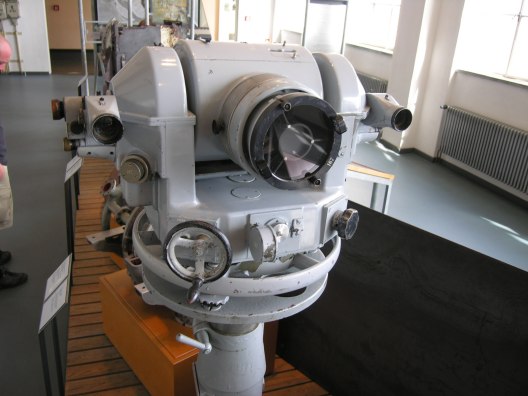
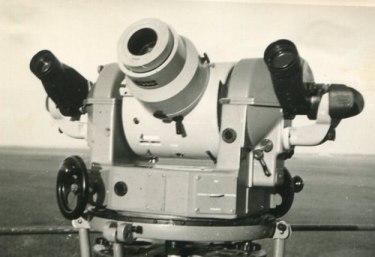
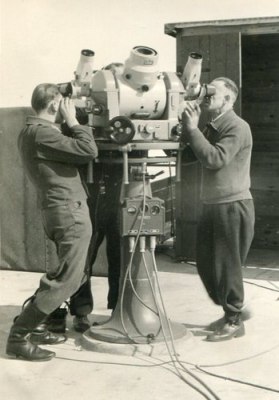
| Das 10x60 Modell hat einen Filterglaswechsler sowie ein einschwenbare Strichplatte mit durchgehenden Gradlinien von 160° links und rechts einer Nulllinie. Die Strichplatte wurde mittels eines halbkreisförmigen Hebels eingeschwenkt und konnte auch beleuchtet werden. Dabei war die Birnenfassung hinten angebracht, konnte mit einme Schiebehebel abgedunkelt werden, und die Kabel wurden von unten durchgeführt, der Strom wurde durch Kontakte an einer hinteren runden Platte auf der Unterseite aufgenommen. Die Filter "hell" und "dunkel" werden mit einem Drehknopf eingeschwenkt. Die normale Mittelstellung ist mit "klar" gekennzeichnet. Die Monokulare sind zumeist mit "Fernrohrlage I" (engl. Version: "Position I") beschriftet. Vermutlich bezeichnet dies die Standardausrichtung des Frnrohrs an der Kinotheodolitenseite. Die Fernrohre wurden mit einer Sockelplatte am Gerät montiert. Beide Monokularseiten waren mit einem zwei Grobvisieren ausgestattet. Das Okular hat einen Dioptrieneinstellung von plus bis minus Fünf. | The 10x60 model has a filter changer and a swing-in reticle with long division lines ranging from 0 to 160° on the left and right of the zero line. The reticle can be swung in by means of a semi-circular lever and had an illumination unit. The lattter and its bulb socket were attached at the back; a levr allwoed to shut off the light. Cables were guided from belwo the inside, and got their current through a bottom plate with two contact pins. The filters "medium (light)" and "dark" were swung in with a wheel knob. The normal centred position is marked "clear". The monoculars are usually isncribed "Fernrohrlage I" (engl. version: "Position I"). This probably denotes the standard alignment of the telesocpes ont he cinetheodolite sides. The telesocpes were mounted to the instrument with a base plate. Both monoculars come with two notch and bead sights. The eyepeice has a dioptre adjustment ranging from plus to minus five. |
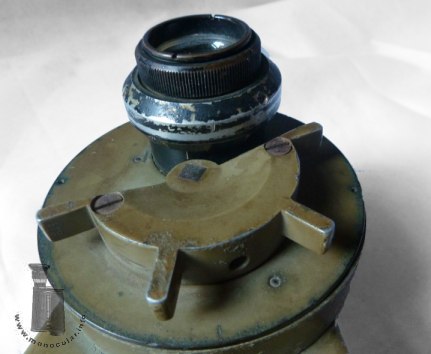
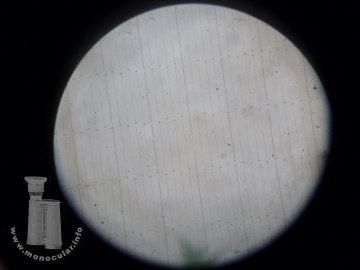
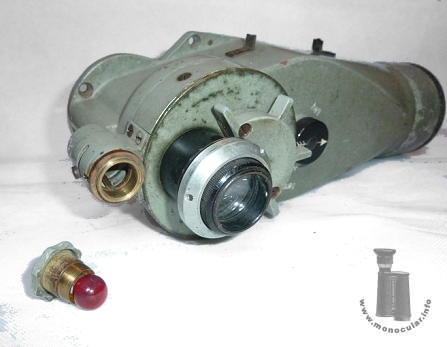

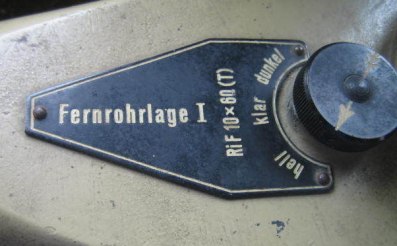
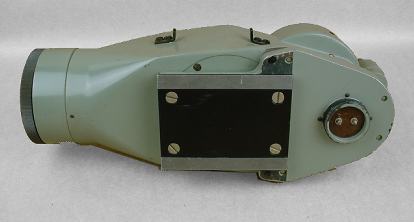
| Das Askania 10x60 wiegt 2178g. Es ist 29cm lang und am kahki-farbenen Metallgehäuse 70mm hoch und von 8 bis zu 10cm breit. Am Okularende ist das Gehäuse 95mm hoch. Das runde Filtergehäuse ist 37mm hoch und 10cm im Durchmesser. Das Oularstück ist 38mm, der Fokussierungsring 48mm und das geriffelte Okularendteil (Augenmuschel) ist 36mm im Durchmesser. Die Objektivfassung misst 82mm im Durhcmesser. Die Objektivlinse liegt ca. 33mm in der Fassung nach innen versetzt. | The Askania 10x60 weighs 2178g. It is 29cm long, the kakhi coloured metal housing is 70mm tall and 8 to 10cm wide. At the ocular end the housing is 95mm tall. The round filter body is 37mm tall and 10cm in diameter. The eyepiece is 38mm, the focusing ring is 48mm and the knurled ocular end (eyecup) is 36mm in diameter. The objective frame measures 82mm in diameter. The objective lens is retracted itno the frame by c. 33mm. |
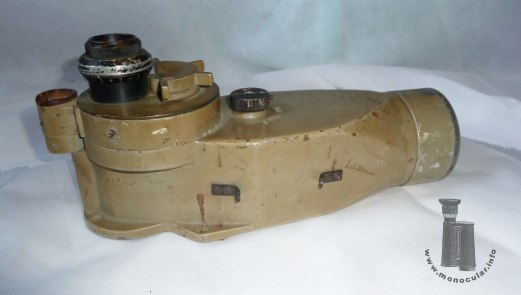
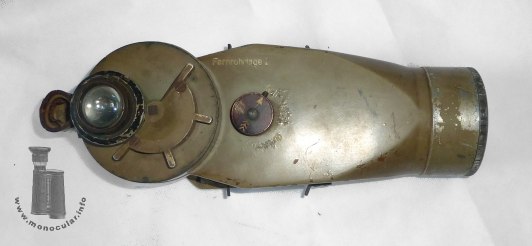
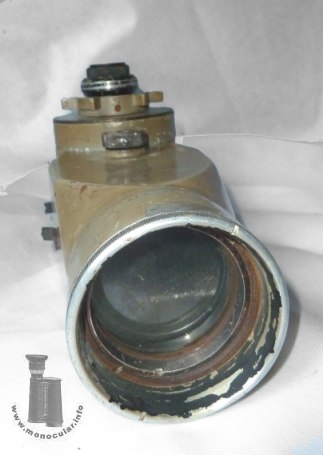
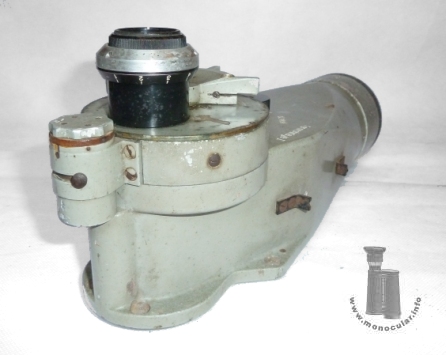
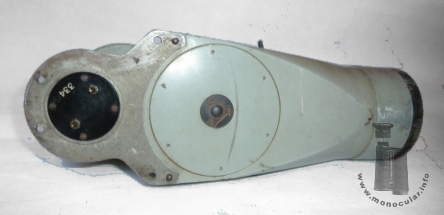
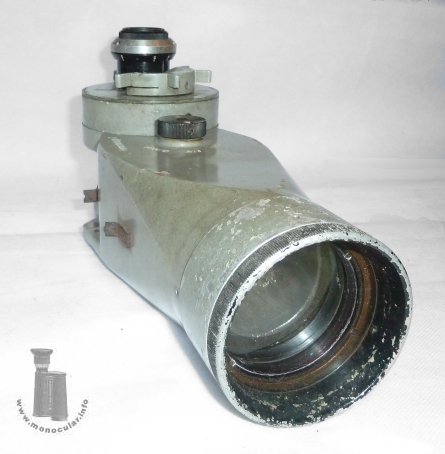
Fotos: Zeun; 1 Museum Peenemünde; 2-3, 8-9 Foren/Internet

